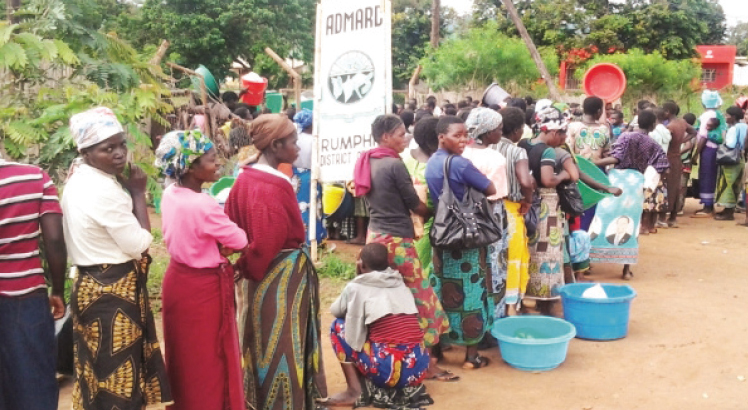In Africa growth story, don’t forget the aid
Africa’s robust economic growth over the past decade has raised hopes the world’s poorest continent can reduce reliance on aid.
The problem with this scenario is its failure to consider the role aid may be playing in the “Africa Rising” narrative.
Looking for a link between aid and growth, an unmistakable pattern emerges from the numbers.
World Bank data shows foreign donor aid to Africa from the OECD group of wealthy countries was just under $13 billion in 2000 and soared to $41 billion in 2006, and then slipped, before rebounding and hitting over $46 billion in 2011.
Net official development assistance per capita was just $19.50 in 2000 and almost tripled to a peak of $53.29 in 2006. It then declined, but in 2011 was back just below $53.00.
Other sources suggest different, though similar, numbers.
Chinese official inflows also surged during this period, though much of this was credit support or “oil-backed loans” and would not count as aid by the OECD definitions, according to AidData, a research initiative tracking over $5.5 trillion in development finance from over 90 donors, including China.
The first decade of this century saw a concerted effort to boost western aid to Africa, marked by anti-poverty campaigns headed by celebrities such as Irish rocker Bono, which featured debt forgiveness on a large scale and other initiatives.
It was also the decade when African growth took off.
From 2001 to 2010, the International Monetary Fund (IMF) said six of the world’s ten fastest growing economies were in Africa: Angola, Nigeria, Ethiopia, Chad, Mozambique and Rwanda.
Nigeria and Angola are Africa’s top oil producers and Chad a recent petrostate, so surging crude prices had a lot to with their growth. But it is instructive to look at aid flows into Ethiopia, Mozambique and Rwanda, which did not have oil dollars.
Rwanda and Mozambique both saw net aid from rich-donor countries roughly triple between 2000 and 2011 – in the case of the former from $341 million to almost $1.3 billion, close to 18 percent of its gross domestic product (GDP).
Western aid to Ethiopia soared almost four-fold $906 million in 2000 to a peak of over $3.8 billion in 2009.
Much of Africa’s growth is consumption driven, and aid can stimulate that, such as when used to support national budgets.
Examples of recent aid linked to growth in Africa include subsidies to peasant farmers in Zambia and Malawi, credited with lifting harvests for the staple maize crops in countries where farming still makes a massive contribution to GDP.
Of course, aid can hamper growth if squandered, if it is pilfered or if it creates a culture of utter dependence.
In her 2009 book Dead Aid, Zambian economist and aid critic Dambisa Moyo noted that in the previous 50 years, “over $1 trillion in development-related aid has been transferred from rich countries to Africa”, with little to show.
But the past decade or so has seen a difference in the sheer scale of flows into Africa, with AidData estimating it at $404 billion from wealthy western donors from 2000 to 2011.
AidData has also tracked another $75 billion in official flows from China – most of which would not be technically defined as aid – over the same period, for a total of almost half a trillion dollars surging into Africa from donors.
And there has been a change in emphasis. Good governance and other conditions – at least from the West – have been placed on aid with more vigour than in the past, and increased transparency has helped to ensure some of it is better spent.
Laggards and chicken counters
But seen through the prism of the region’s laggards, the link between aid and growth is not so apparent.
Zimbabwe’s economy contracted sharply in the first decade of this century, but aid flows actually increased to $718 million in 2011 from $177 million in 2000.
Much of this would have been humanitarian aid as Zimbabwe has suffered periodic food shortages related to a wider economic collapse triggered in part by the seizure of white-owned commercial farms for redistribution to landless blacks.
Eritrea from 2003 to 2011 had average GDP growth of only 0.7 percent but saw its aid coffers swell from $67.5 million in 2000 to $163.27 million in 2011, with a peak in 2005 of $350 million.
An influential 2011 paper, Counting Chickens When They Hatch, concluded that “increases in aid have been followed on average by modest increases in investment and growth.”
“Aid causes some degree of growth in recipient countries, though the magnitude of this relationship is modest, varies greatly across recipients, and diminishes at high levels,” wrote the authors of the study, published in the Economic Journal.
Then there is the old trade versus aid argument.
The value of exports from the region soared to $420 billion – about ten times annual aid flows – from $100 billion between 2000 and 2011, according to the World Bank.
But the linkage between trade and GDP expansion is also not cut and dry. Three-quarters of the region’s exports are natural resources – and these have been stoked by a now cooling commodity boom – while 60 percent of Africa’s recent economic growth has come from consumption.
Minerals and metals account for the lion’ share of regional giant South Africa’s exports, but mining only 6 percent of GDP.
Meanwhile, the annual value of the region’s manufactured goods from 2000 to 2011 only rose from $13 billion to $33 billion – so aid flows still outpace manufacturing revenue.
This is worrying as it essentially means Africa still relies more on handouts than it does on making things that its own inhabitants or the rest of the world wants to buy.
While the exact influence of aid on the African growth story cannot be pinned down precisely, what is certain is that it will continue to play a crucial role in the growth story.—Reuters





